




Lateral Faces of a Solid Shape - Definition and Examples
What are the Lateral Faces of a 3-D Figure?
The word "lateral" literally means the side of an object. So, you must be wondering what are lateral faces in Maths? Well, the lateral surface or face of a three-dimensional figure refers to all the sides of the solid figure, except its base and top.
Examples
Here are some 3-D geometric figures to help you understand the concept of lateral faces better.
Pentagonal Prism: In this solid shape, there are 2 regular pentagons that form the bases (as shown in the figure) and 5 sides. These five sides are all rectangular in shape and are known as the lateral faces of the figure. Also, all the rectangular lateral sides of this prism are congruent.
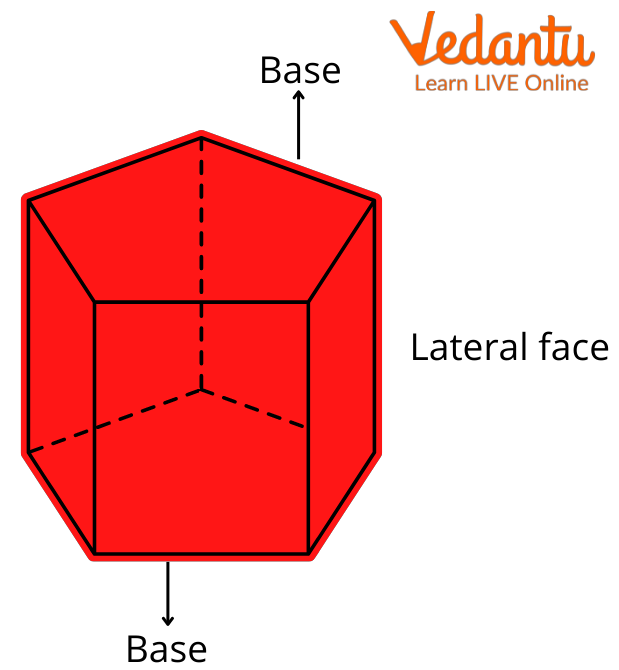
Rectangular Prism: In this type of prism, if we consider the two square-shaped sides as its base, then the figure has 4 lateral faces. Each of its lateral faces is rectangular and congruent.
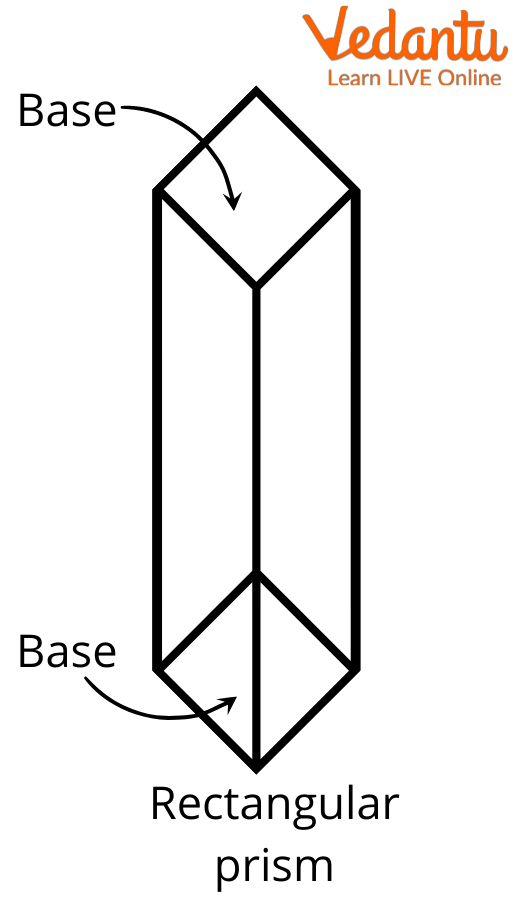
Square Pyramid: In this pyramid, there is one flat square base at the bottom, and all the other faces apart from the base are its lateral faces. Therefore, it has 4 lateral faces.
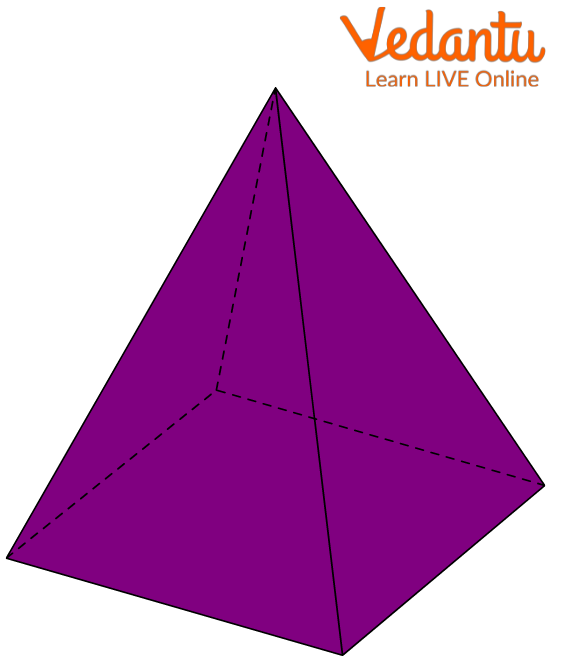
Cylinder: It is a unique shape with two circles as its bases — at the top and bottom. Unlike other shapes, it has a cylindrical lateral face also called its curved surface. When cut and flattened, the lateral face forms a square.
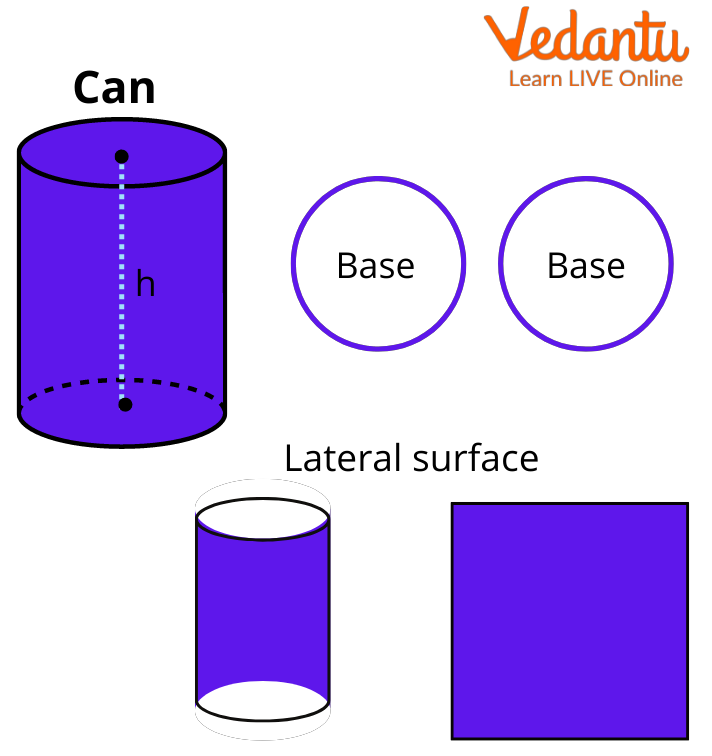
Lateral Surface Area
Now that you have learnt what are lateral faces, you should also know a bit about how to find the areas of these faces specifically.
The lateral surface area of a solid geometric figure is defined as the total area covered by only the lateral surfaces of the figure. This area should not be confused with the total surface area. The total surface area of a 3-d shape is the sum of the lateral surface area and the areas of its base and top.
Thus, total surface area = lateral surface area + area of bases
Here are the lateral surface areas of some common 3-D shapes.
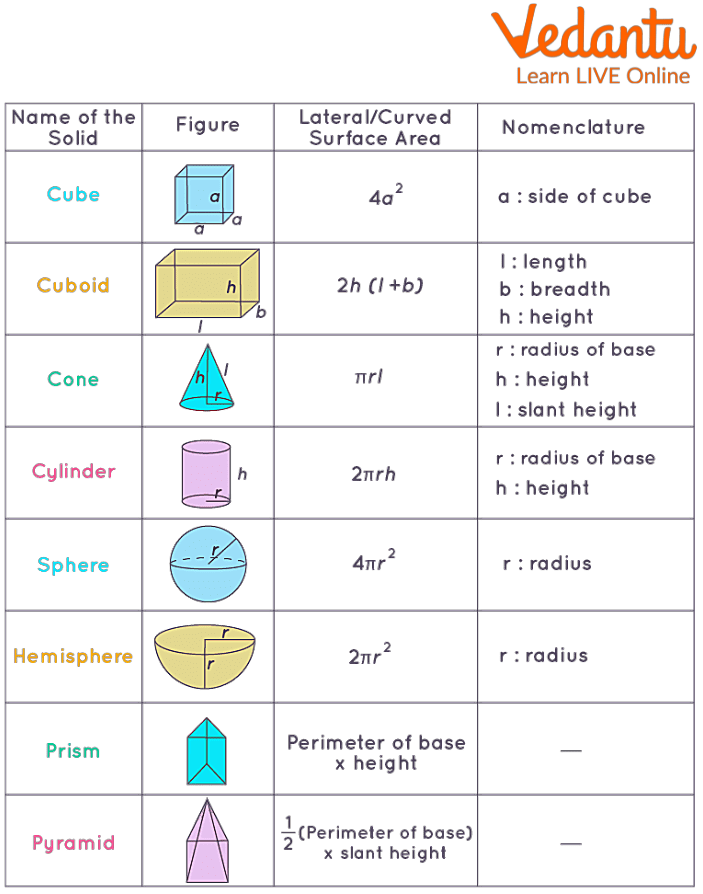
Conclusion
We can conclude that the lateral faces are present only in 3-D figures and not in 2-D shapes. Also, different figures have different numbers and shapes of lateral faces. It is also important to remember the difference between the lateral surface area and the total surface area of an object.
If you are looking for more such informational Maths topics, head to our website and explore through a huge collection of well-researched articles.
FAQs on What are Lateral Faces?
1. Determine the number of lateral faces and bases in a cone.
A cone, which is the shape of ice-cream cones and birthday caps, has one circular base at the bottom. It has one curved lateral surface, similar to a cylinder, but different in shape.
2. How to teach ‘what are lateral faces’ to children?
The most common method to teach solid shapes and their different surfaces to children is by using real-life examples. You can show kids different objects of different shapes around them and ask them to point at its lateral faces and bases. Also, ask them which shape is the object. For example, you can show them ice cream cones, circular wheels, tables in your homes, cardboard boxes, etc.























